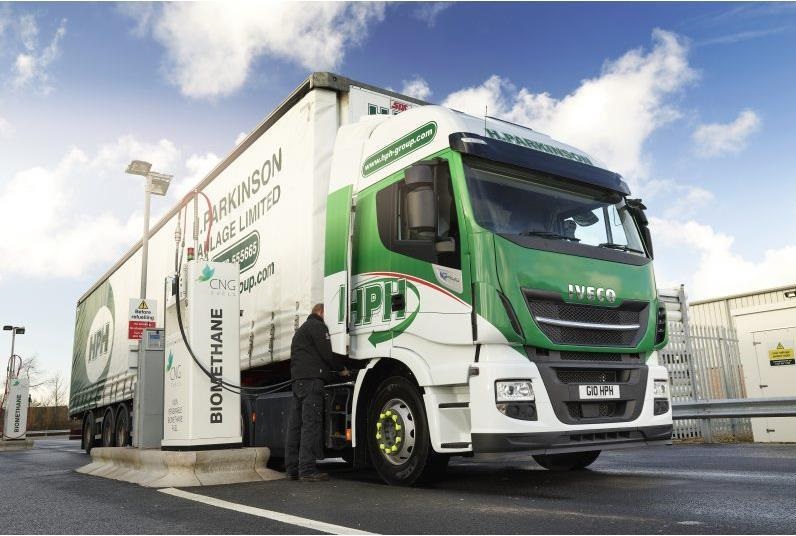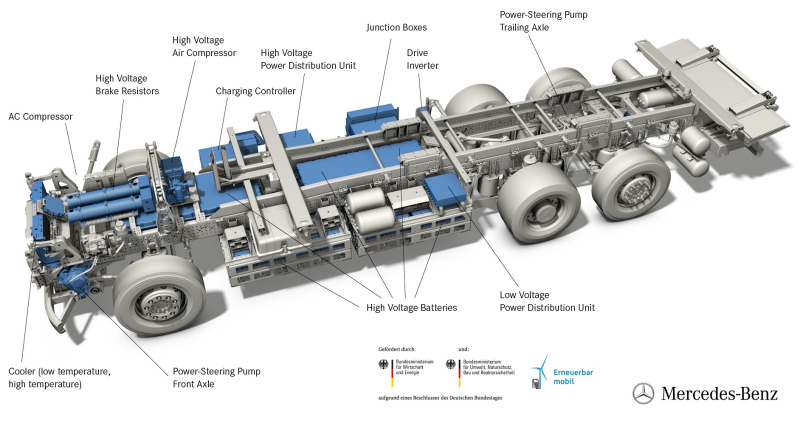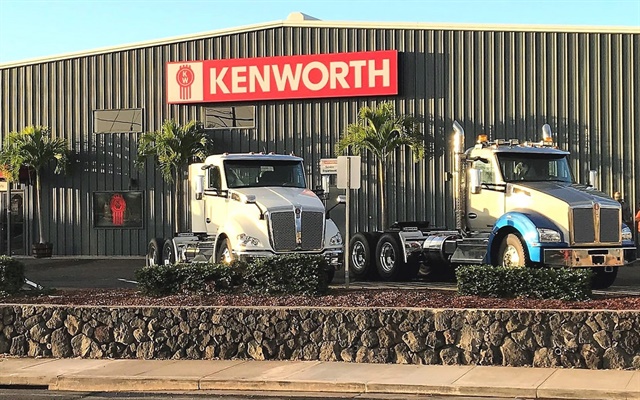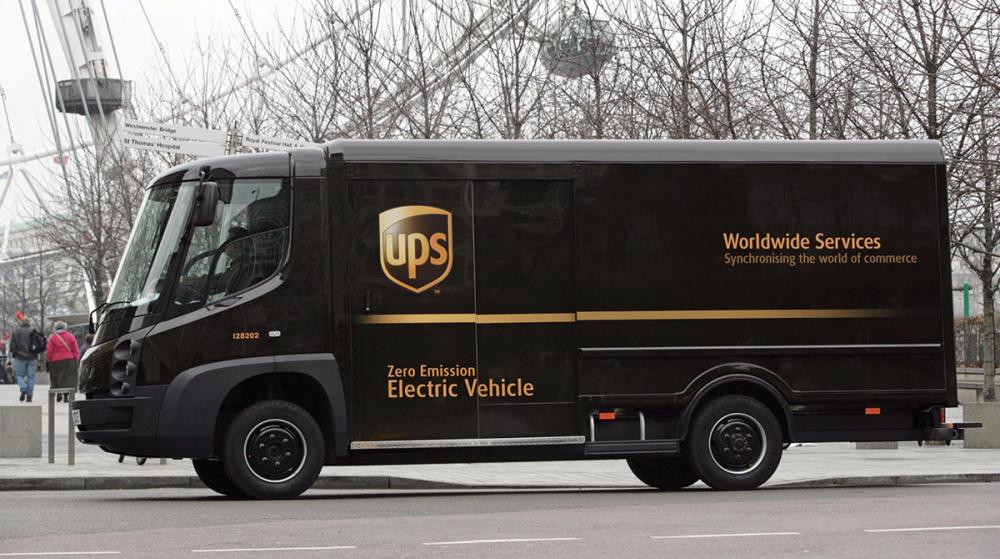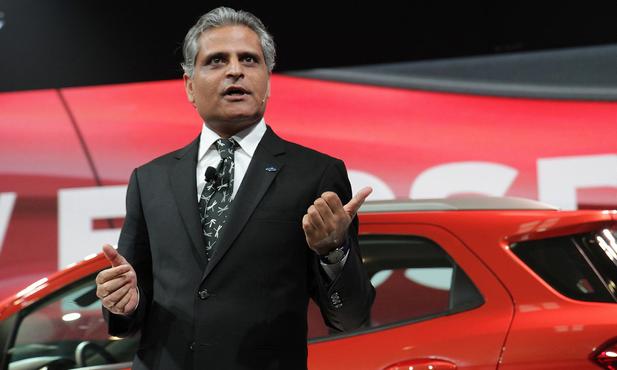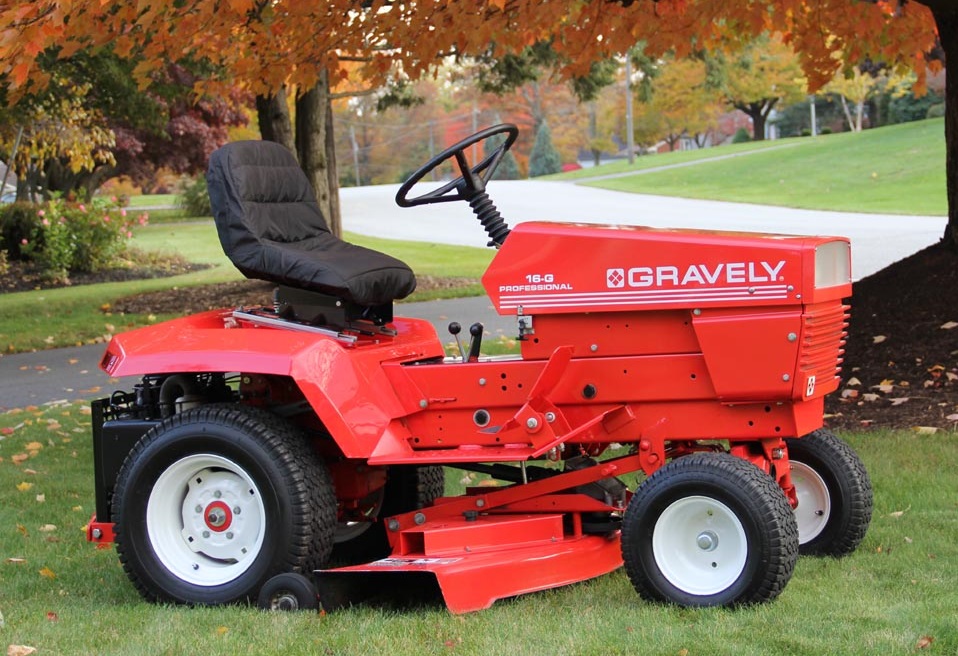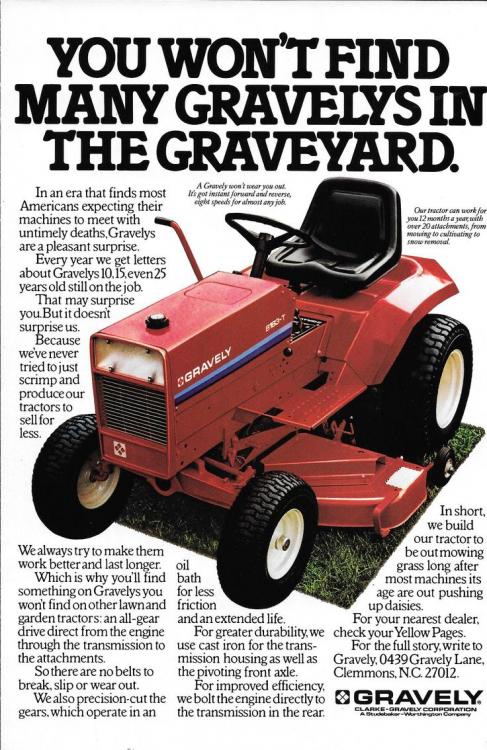
kscarbel2
Moderator-
Posts
18,885 -
Joined
-
Days Won
114
Content Type
Profiles
Forums
Gallery
Events
Blogs
BMT Wiki
Collections
Store
Everything posted by kscarbel2
-
I suggest you contact your Mack brand district service representative thru your local Mack brand distributor’s service manager. It’s his job to support you.
-
Reuters / February 26, 2018 STOCKHOLM (Reuters) - Truckmaker AB Volvo is to drop the CEO of Geely-owned Volvo Cars from its board, in a first sign of fallout from the Chinese carmaker’s swoop on Germany’s Daimler. Volvo Cars is a subsidiary of Zheijang Geely Holding Group Co whose main owner is Li Shufu, Geely’s founder, who revealed last week that he has built up an almost 10 percent stake in rival Daimler, which along with AB Volvo is one of the world’s biggest truckmakers. Volvo Cars Chief Executive Hakan Samuelsson has been a board member of AB Volvo since 2016. He was the CEO of German truckmaker MAN until 2009, and became CEO of Volvo Cars in 2012, two years after Geely bought the company. “The reason that Hakan Samuelsson is not proposed for re-election is the announcement that Geely Group has become the largest shareholder of the German vehicle manufacturer Daimler, one of the Volvo Group’s major competitors,” the AB Volvo election committee said in a statement on Monday. Geely’s move on Daimler shows how car companies are keen to develop or access technology to face a challenge from new competitors such as Tesla and Google. But the Chinese company also struck a deal in December to buy activist investor Cevian Capital’s stake in truckmaker AB Volvo, comprising 8.2 percent of shares and 15.6 percent of voting rights in the truckmaker. Cevian completed the stake sale in January, but the deal was structured so that Nomura International Plc and Barclays Capital Securities Limited would first buy the shares, and then sell them to Geely. A Geely spokesman told Reuters that Geely’s acquisition of the AB Volvo stake was still pending Chinese government approval. Bengt Kjell, head of Volvo’s election committee and a board member at AB Volvo’s largest owner by votes, Industrivarden, told Reuters he had only know about Geely’s Daimler purchase since Friday. “We have of course also seen earlier speculations, but the confirmation came late on Friday, and we can only act on facts,” Kjell said. He said any cooperation between the companies needed to come from a “management-operational perspective, and not from an owner with 10 percent being able to dictate, move around cooperations, or point from the above.” “We have to take into account the interest of all shareholders, and not just the interest of a single large owner” Kjell said.
-
Transport Engineer / February 23, 2018 Preston-based H Parkinson Haulage has taken delivery of seven Stralis NP 4x2 tractors – its first IVECO vehicles and also its first natural gas-powered units. After trialling demonstrators from two manufacturers, the haulier decided to go with IVECO, citing quiet operation, driver feedback and powerful engine – and the potential “massive” CO2 saving. Supplied by Walton Summit Truck Centre, the operator’s latest additions to its 95-strong fleet are four ex-demonstrators and three new vehicles. “These vehicles will be doing nearly a quarter of a million miles a year each – so it was vital for us and our customers to reduce the environmental impact,” says Steve Sugden, general manager of H Parkinson Haulage. “Currently, for a CNG vehicle, no one has a better offering than IVECO, and with the seven Stralis NPs, coupled with our longer semi-trailers (LSTs), we’ve worked out we can reduce our CO2 emissions by a massive 1,750 tonnes every year.” He adds: “When you couple an LST with a Stralis NP tractor unit, it’s going to be about as environmentally friendly as you can get. This is the future of green logistics.” Powered by compressed biomethane, H Parkinson’s Stralis NP AS440S40T/P vehicles have Hi-Way cabs and are powered by Cursor 9 Euro VI natural gas engines, delivering the same output of 395bhp and 1,700Nm torque as their diesel equivalents. A 454bhp natural gas engine is also available. The trucks will be run to end of life on intensive multi-shift operations. Sugden adds: “If these vehicles perform well, and with IVECO being the most advanced manufacturer in the alternative fuel sector, then we will consider adding more Stralis NPs to our fleet in the future.” .
-
FCA will drop diesel vehicles by 2022 Reuters / February 26, 2018 MILAN -- Fiat Chrysler Automobiles plans to eliminate diesel engines from all its passenger vehicles by 2022, amid a collapse in demand and spiraling costs for the powertrain, the Financial Times reported. Under a four-year plan to be unveiled on June 1, the automaker will announce it intends to phase out the fuel type from the cars across its brands, the FT said, citing people familiar with the company strategy. Fiat Chrysler declined to comment on the report. FCA becomes the latest automaker to opt out of diesel after Toyota said it would likely not unveil another model with a diesel engine. Diesel's dominance in Europe has fallen since Volkswagen Group's emissions scandal, which led to rising political opposition to the fuel and plans by several European cities to ban some diesel models from its streets.
-
Daimler Testing Heavy-Duty Electric Actros Truck
kscarbel2 replied to kscarbel2's topic in Trucking News
-
What suspension is this?
kscarbel2 replied to seyser's topic in Antique and Classic Mack Trucks General Discussion
Yes, pictured in that link above. -
What suspension is this?
kscarbel2 replied to seyser's topic in Antique and Classic Mack Trucks General Discussion
Here's a copy of the Safety Campaign, SC176, in which we updated all first generation suspensions to the revised design I spoke of. We didn't sell many of the early version, but the latter version was popular. https://static.nhtsa.gov/odi/rcl/1986/RC-86V009-NN.PDF -
https://www.ebay.com/itm/1988-Mack-Engine-Overhaul-Manual-Six-Cylinder-Diesel-Engine-E6-672-4VH/292306849305?_trkparms=aid%3D222007%26algo%3DSIM.MBE%26ao%3D1%26asc%3D41375%26meid%3D0da7cf48eea441fcabe267bb6438b489%26pid%3D100011%26rk%3D6%26rkt%3D7%26sd%3D191071541529&_trksid=p2047675.c100011.m1850
-
What suspension is this?
kscarbel2 replied to seyser's topic in Antique and Classic Mack Trucks General Discussion
The ST34 from 1985 rode better than the camelback, was just as heavy duty and had a stellar track record in over-the-road haulage. -
What suspension is this?
kscarbel2 replied to seyser's topic in Antique and Classic Mack Trucks General Discussion
That was the early version, 1978 thru 1984. We introduced a new mounting arrangement in 1985 (components mentioned above) that corrected the issue you mention. -
What suspension is this?
kscarbel2 replied to seyser's topic in Antique and Classic Mack Trucks General Discussion
4QK3368AM spring (34,000lb) 4QK3369AM spring (38,000lb) 3AX1993 bolts and 21AX847 locknuts with 8QD261 alignment adjustment collars. -
Heavy Duty Trucking (HDT) / February 23, 2018 Kenworth Hawaii has opened a 14,500 square foot dealership in Kailua-Kona, allowing customers in the Aloha State to purchase Kenworth trucks without going through stateside dealers. "By opening a Kenworth dealership group based here on the Islands, we’ve become more responsive to customers,” said Kevin Balog, dealer principal for Kenworth Hawaii. “We can offer a whole new level of service.” The dealership will offer two service bays, a 2,000 square-foot parts display area, and 4,000 square-foot parts warehouse. The dealership is easily accessible to major routes connecting Kailua-Kona with the rest of the Big Island of Hawaii. It has a large parking lot and is just one block from the largest freight company on the Big Island. Kenworth is also remodeling and opening another dealership location in Hilo, which is also on the Big Island. It will offer two service bays, a 3,600 square-foot parts warehouse, 1,000 square-foot parts display area, and a drivers’ lounge. “The addition of Kenworth Hawaii’s Hilo and Kona locations will greatly enhance the Kenworth dealer network,” said Kevin Baney, Kenworth assistant general manager for sales and marketing. “We look forward to working with Kevin Balog to help provide industry-leading Kenworth trucks, technologies, parts and service to the trucking market in Hawaii.” .
-
- 1
-

-
What suspension is this?
kscarbel2 replied to seyser's topic in Antique and Classic Mack Trucks General Discussion
Not a clear picture, but could be a ST34 or ST38 Mack parabolic taper-leaf. -
Given it's a new 2017 truck, this is a warranty matter for a Mack brand dealer to resolve. If no Mack brand dealer can address it to your satisfaction, I suggest you contact Mack brand customer satisfaction at +1 (866) 298-6586. Get the customer after-sales support from the manufacturer that you paid for in purchasing a new truck.
-
Communist Party-backed Geely wants major Daimler stake
kscarbel2 replied to kscarbel2's topic in Trucking News
Communist Party-backed Geely buys $9 billion stake in Daimler Reuters, Bloomberg & Automotive News / February 23, 2018 Li Shufu, the chairman and main owner of Chinese carmaker Geely, has amassed a stake of 9.69 percent in Daimler AG, the German company said in a regulatory filing Friday. The stake, worth nearly $9 billion at the current market price for Daimler shares, makes Li the biggest single shareholder in the maker of Mercedes Benz cars, trucks and vans. Sources told Reuters this month that Geely was buying Daimler shares as it seeks an alliance in electric vehicle technology -- a response to Chinese requirements for more clean cars to be put on the road to cut pollution. A Daimler spokesman called the stake purchase a private investment by Li. "We are delighted, with Li Shufu, to have won over another long-term investor who is convinced of Daimler's innovative prowess, strategy and future potential," the spokesman said in response to a request for comment. "Daimler knows and respects Li Shufu as a Chinese entrepreneur of particular competence and forward thinking." Geely has been building up a stake of just under 10 percent through purchases of Daimler’s shares in the stock market in recent weeks. Zhejiang Geely owns Volvo and last year acquired a 49.9 percent stake in Malaysian automaker Proton. In addition, last December Geely spent $3.9 billion to become the biggest shareholder of Volvo AB, which is the world's second-largest truck maker. Last year Geely also won control of British sports car maker Lotus while in 2013 it purchased Manganese Bronze Holdings, rescuing the maker of London's iconic black cabs after it entered administration. Geely also plans to introduce to Europe its new brand Lynk & CO, which started sales in its home country last year. Following the potential deal, Zhejiang Geely would surpass Kuwait Investment Authority, as Daimler's top shareholder. Kuwait's sovereign wealth fund owned about 6.8 percent of Daimler's shares as Sept. 30, according to Thomson Reuters data. -
UPS and Workhorse to Collaborate on Electric Delivery Vehicles Heavy Duty Trucking (HDT) / February 22, 2018 UPS has announced plans to deploy 50 plug-in electric delivery trucks designed from the ground up as part of a collaboration with Workhorse Group. The two companies aim to produce electric delivery trucks that are comparable in acquisition cost to conventionally fueled trucks without any subsidies. The trucks are expected to have a range of around 100 miles per charge and provide a nearly 400% fuel efficiency improvement over conventional trucks. The Class 5 zero-emission trucks will feature a cab-forward design to optimize the driver compartment and cargo area, increase efficiency, and reduce vehicle weight. “Electric vehicle technology is rapidly improving with battery, charging and smart grid advances that allow us to specify our delivery vehicles to eliminate emissions, noise and dependence on diesel and gasoline,” said Carlton Rose, president, global fleet maintenance and engineering for UPS. “With our scale and real-world duty cycles, these new electric trucks will be a quantum leap forward for the purpose-built UPS delivery fleet. The all electric trucks will deliver by day and re-charge overnight.” The trucks will join UPS’s Rolling Lab, the company’s fleet of more than 9,000 alternative fuel and advanced technology vehicles. UPS will test the vehicles primarily on urban routes across the country, including in Atlanta, Dallas, and Los Angeles. Following real-world test deployments, UPS and Workhorse will fine-tune the design in time to deploy a larger fleet in 2019. Since most of the maintenance costs of a vehicle are associated with the engine and related components, UPS expects the operating cost of the new plug-in electric vehicle to be less than a similarly equipped diesel or gasoline vehicle. UPS’s goal is to make the new electric vehicles a standard selection, where appropriate, in its fleet of the future. UPS has more than 300 electric vehicles deployed in Europe and the U.S., and nearly 700 hybrid electric vehicles. The company recently ordered 125 new fully electric Semi tractors to be built by Tesla in 2019, the largest pre-order to date. Last year, UPS also announced it will become the first commercial customer in the U.S. to start using three medium-duty electric trucks from Daimler Trucks' Fuso brand, called the eCanter. UPS has an internal goal that one out of every four new vehicles purchased by 2020 will be an alternative fuel or advanced technology vehicle. The company has also pledged to obtain 25% of the electricity it consumes from renewable energy sources by 2025 and replace 40% of all ground fuel with sources other than conventional gasoline and diesel.
-
UPS to Add Zero-Emissions Delivery Trucks Transport Topics / February 22, 2018 UPS Inc. plans to deploy 50 plug-in electric delivery trucks that will be comparable in acquisition cost to conventional-fueled trucks without any subsidies — an industry first that is breaking a key barrier to large-scale fleet adoption. The company is collaborating with Workhorse Group Inc. to design the Class 5 vehicles from the ground up, with zero tailpipe emissions. UPS ranks No. 1 on the Transport Topics list of the largest for-hire carriers in North America. “With our scale and real-world duty cycles, these new electric trucks will be a quantum leap forward for the purpose-built UPS delivery fleet,” Carlton Rose, president of global fleet maintenance and engineering for UPS, said in a statement. Workhorse claims these vehicles provide nearly 400% fuel efficiency improvement as well as optimum energy efficiency, vehicle performance and a better driver experience. Each truck will have a range of approximately 100 miles between charges, according to UPS. Following test deployments, UPS and Workhorse will fine-tune the cab-forward design to deploy a larger fleet in 2019 and beyond. .
-
Jason Cannon, Commercial Carrier Journal (CCJ) / February 22, 2018 UPS says it will deploy 50 plug-in electric delivery trucks and will collaborate with vehicle-maker Workhorse Group to design the vehicles from scratch. Following real-world test deployments on urban routes across the country, including Atlanta, Dallas and Los Angeles, UPS and Workhorse expect to fine-tune the design in time to deploy a larger fleet next year. UPS President of Global Fleet Maintenance and Engineering Carlton Rose says he expects the electric vehicles to be competitively priced with conventional-fueled trucks without subsidies. “With our scale and real-world duty cycles, these new electric trucks will be a quantum leap forward for the purpose-built UPS delivery fleet,” he says, adding the all-electric trucks will deliver by day and re-charge overnight. Workhorse claims the Class 5 vehicles will provide a nearly 400 percent fuel efficiency improvement and each will feature a range of approximately 100 miles between charges. “This innovation is the result of Workhorse working closely with UPS over the last four years refining our electric vehicles with hard fought lessons from millions of road miles and thousands of packages delivered,” Workhorse Group CEO Steve Burns says. “Our goal is to make it easy for UPS and others to go electric by removing prior roadblocks to large scale acceptance such as cost.” The new trucks will join the UPS’s “Rolling Lab” fleet of more than 9,000 alternative fuel and advanced technology vehicles. UPS has more than 300 electric vehicles deployed in Europe and the U.S., and nearly 700 hybrid electric vehicles. The company in December ordered 125 new fully-electric Semi tractors to be built by Tesla in 2019, the largest pre-order to date. Last September, UPS announced it will become the first commercial customer in the U.S. to start using three Fuso eCanter medium-duty electric trucks. UPS says its goal is to make the new electric vehicles a standard selection, where appropriate, in its fleet of the future. UPS has approximately 35,000 diesel or gasoline trucks in its fleet that are comparable in size and are used in routes with duty cycles, or daily miles traveled similar to the new electric vehicles.
-
Ford picks Kumar Galhotra to replace Raj Nair as North America chief Michael Martinez, Automotive News / February 22, 2018 DETROIT -- Ford Motor Co. on Thursday tapped Kumar Galhotra, a company veteran who steered the Lincoln luxury brand back to respectability, to replace Raj Nair, who was ousted Wednesday after an internal investigation uncovered "inappropriate behavior," as its president of North America. Galhotra, 52, will take over Nair's duties in North America on March 1. He previously was group vice president, Lincoln and Ford's chief marketing officer. Galhotra had added chief marketing officer to his duties Nov. 1 last year. "Kumar is an incredibly talented executive with a special feel for product and brand. He is also a seasoned leader who knows how to drive a business transformation," Jim Farley, Ford's president of global markets, said in a statement. "Kumar is the right person to lead our North American business to new levels of operational fitness, product and brand excellence, and profitability." Joy Falotico will take over Galhotra's duties as group vice president of Lincoln and chief marketing officer, effective March 1. Falotico, 50, previously was CEO of Ford Credit. She will continue to serve as its chairman. "Joy has been a driving force behind not only Ford Credit's consistently strong financial performance but also its business model innovation and transition to a digital customer platform," Farley said. "She brings marketing experience and a deep customer focus as Ford enters a very busy new product launch period to drive growth in revenue and profitability." Additional appointments: David McClelland will succeed Falotico as CEO of Ford Credit. McClelland, 48, was most recently executive vice president, marketing and Asia Pacific. Stuart Rowley was named COO of North America, and will report to Galhotra. Rowley, 50, was previously vice president of strategy. He will be responsible "for driving the redesign of the North American business to improve its overall fitness," Ford said. John Lawler will succeed Rowley as vice president of strategy. Lawler, 51, will report to CFO Bob Shanks. He was most recently Ford's corporate controller. Cathy O'Callaghan, 49, will succeed Lawler as Ford's corporate controller. She most recently was CFO of Ford South America.
-
John Deere Introduces New Easy Change 30-Second Oil Change System
kscarbel2 replied to kscarbel2's topic in Odds and Ends
There are two categories today, both lawn and garden tractors, and riding lawn mowers. For example, the John Deere 100 Series are riding lawn mowers, You can fit a plow or snow blower, but that's about it. The Deere dealer exclusive 300, 500 and 700 Series "Select" models are full range lawn and garden tractors with heavier frames and a wide range of implements. http://www.deere.com/en_US/docs/html/brochures/publication.html?id=a56dff2b#1 The rear-engined Gravely tractors were a serious machine. .
BigMackTrucks.com
BigMackTrucks.com is a support forum for antique, classic and modern Mack Trucks! The forum is owned and maintained by Watt's Truck Center, Inc. an independent, full service Mack dealer. The forums are not affiliated with Mack Trucks, Inc.
Our Vendors and Advertisers
Thank you for your support!


